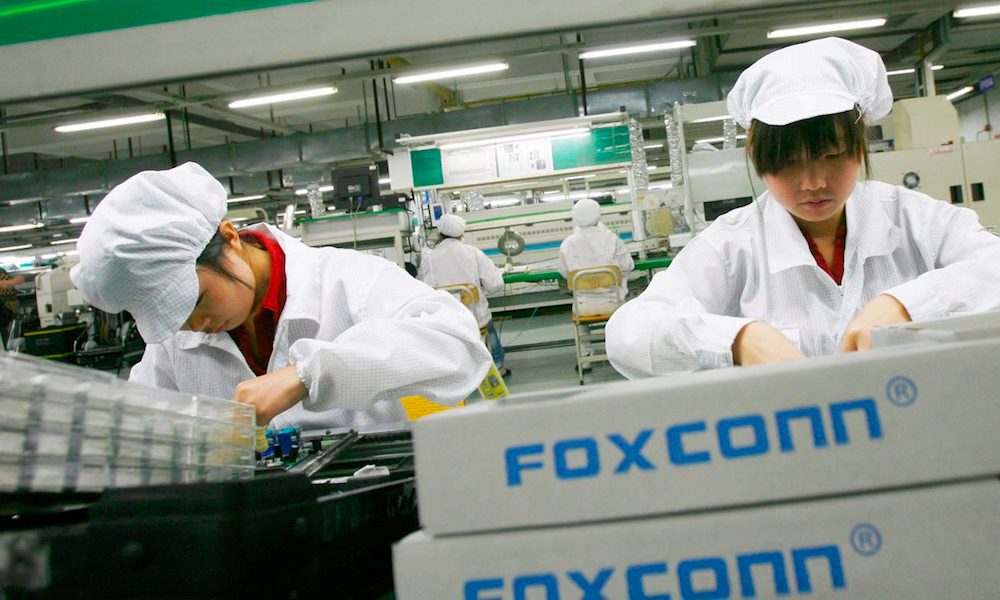Apple Partner Foxconn Reopens Plants, Only 10% of Workers Show Up

Toggle Dark Mode
The coronavirus outbreak in China has led to widespread speculation and debate about what impact it may have on Apple’s supply chain, especially with the new budget ”iPhone 9” expected to arrive next month, and as the situation with Apple’s suppliers continues into its second week, there appears to be even more uncertainty as to exactly what it going on and what effect it’s going to have on Apple’s product release schedule.
Early reports from late January suggested that there could be a big impact on not only the upcoming “iPhone 9,” but on Apple’s overall product lineup, since not only are the main suppliers like Foxconn impacted directly, but so is almost every upstream supplier that provides the necessary components that Foxconn needs to assemble iPhones and other Apple products.
For its part, Foxconn insisted there was no problem, and that it would be restarting all of its facilities today, as did other Apple suppliers, adding that everything was still on track and the one-week closure wouldn’t impact its shipments, which presumably include the new iPhone.
However, Foxconn did tell Reuters last week that any delay beyond Feb. 9 could have a “big” impact on meeting its production schedule, and now it looks like the company may be struggling to keep up as it not only encounters difficulty getting permission from the Chinese government to reopen its plants, but also in even getting its workforce to show up for work at the plants that it has been able to reopen.
Late last week, Foxconn claimed that Chinese authorities had refused to grant them permission to reopen their plants as scheduled, with Nikkei Asian Review reporting that Chinese public health officials had deemed the plants as having too high of a risk of coronavirus infection to be permitted to reopen. However, as Reuters reports, Shenzhen’s Longhua district government publicly refuted that claim on WeChat, saying that it was still “conducting checks” and that Foxconn would be allowed to restart production once all of the inspections were completed.
Government officials also said that they had received proposals from Foxconn subsidiaries explained how they would be putting “epidemic prevention and control measures” in place, such as ensuring that all workers “wear masks, undergo temperature checks, and adhere to a dining system considered safe.”
Other sources told Reuters that “tens of thousands” of workers had already returned from an extended Chinese New Year holiday and were waiting to resume work today.
One Plant Still Closed, Others Severely Short-Staffed
The reality, however, seems to be quite different than what was being reported at the end of last week, with Foxconn being refused permission by the Chinese government to reopen its plant in Shenzhen, likely due to inadequate control measures being in place — authorities are said to be scheduled to check the plant again later this week, but thus far employees have been told not to return to work on Tuesday.
On the other hand, a later report from Reuters noted that Foxconn was given the green light to open its other plant in Zhengzhou and possibly Shenzhen as well, although thus far only 10% of its workforce has actually shown up for work.
In Zhengzhou, about 16,000 people, or less than 10% of the workforce, had returned to Foxconn’s plant as of Monday while in Shenzhen about 20,000 workers, or roughly 10% of the workforce, were back after the Lunar New Year holiday.
In the case of Shenzhen, however, this may simply be a matter of the notification of the reopening going out at the eleventh hour, since the earlier report suggested the plant wouldn’t be opening until later this week. Sources told Reuters that employees of the Shenzhen plant have been notified to return to work tomorrow, and it will be resumed in a “staggered and orderly manner” in order to ensure that there isn’t a further outbreak of the virus.
Impact on Apple
Meanwhile, noted analyst Ming-Chi Kuo has weighed in with a note to investors, warning them to keep an eye on the situation, since the Zhenghzhou site is the most critical production site for the iPhone 11 and the upcoming “iPhone 9” and even at best the labour return rate is currently estimated to be in the 40–60% range, which means it will be working at less than peak capacity for some time before things get fully back to normal.
Meanwhile, Kuo notes, the Shenzhen location has been pegged to produce the later 2020 iPhone lineup, which means that this one has more time to recover for the effects of the outbreak, but if the crisis continues Apple’s “iPhone 12” plans could certainly be affected.
Apple’s AirPods and AirPods Pro are more likely to be impacted by the outbreak, as demand is significantly higher for these already, and prior to the incident Apple had been expecting manufacturers to ramp up to produce over 45 million units in the first half of 2020, which no longer seems possible in the short term under the current closures and labour shortages.






